

In order to get anything useful out of our images, we have to correct for sytematic errors or "noise". Take for example, this raw image of our galaxy:
This is a raw image (ngc2903c1-50-300-001), with certain noise points enhanced (the red line on the left was added to make the dark overscan region visible on this page). Processing the images can get rid of most of this noise. Image is displayed north down, east left due to ImageJ's tendency to flip fits files.
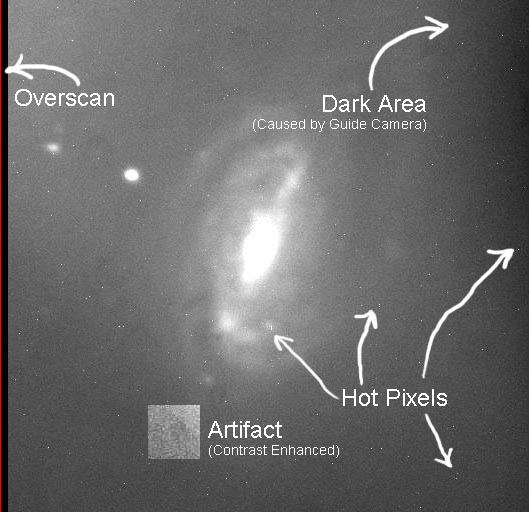
The same basic steps are applied to all images, including calibration frames. The following is a discription of some of the common processes:
This is the first step applied to all images, including the calibration masters. On the left edge of the raw image is a band of pixels about 6 wide and as long as the image called the overscan region. After the image has been exposed and the CCD chip is being read out, it adds these pixels which contain information on the bias offset at that time. This step includes measuring this region, taking the mean value, and subtracting it from the entire image. Then, starting at x = 8 pixels, cropping the image to 520x512 pixels, thereby removing the overscan region
This is the process of aligning images so that each area on the image, say a star, is at the same pixel location on each image. There are two plugins for ImageJ (created by Phillipe Thévenaz, available here)that perform this function: TurboReg, which aligns separate images, and StackReg, which aligns all the images in a stack at once.
This process simply takes a bunch of images and creates a new image. Each pixel on the new image has the mean value of each corresponding pixel on the images that created it. This has a tendancy of eliminating random noise.
We can get rid of noise by taking calibration frames which we average and apply to the images. The types of frames we take are:
These are 10 0s exposures with the shutter on the camera closed. Basically it's just a readout of the noise generated by the voltage in the chip. An Overscan Subtract is performed on the frames and then they are averaged to produce the Master Bias.
These correct for noise caused by chip temperature and "hot pixels". A CCD chip works by collecting electrons released by the photoelectric effect (photons hitting the chip), but electrons can also be released by heat, which adds noise. Hot pixels are "bad" pixels; they read too high on each image. They are exposures with the shutter closed for the same length of time as the images to be calibrated. 5 of these are taken, an Overscan subtract is Master Bias is subtracted from them before averaging to create the Master Dark frame. While there are occasional random extremely hot pixels (ie on the order of hundreds or thousands in a region where the pixel counts are on the order of 1 or tens) these are not caused by the chip and so are not corrected for as they are truly random events.
These correct for uneven lighting and artifacts (shadows due to dust and stuff on optical surfaces) caused by the telescope-filter-camera optics and position of the guide camera. There are three different methods of taking them, we used two. Dark Sky Flats (feb6/7): take 5-10 images of the sky around the object, each for the same amount of time as the object data, shifting the field each time so that any stars are on different pixels. Twilight Flats (mar15/16): at sunset/sunrise take images of the sky opposite the setting/rising sun at ~ 25° altitude, and expose until the maximum counts hit 20 000. These require their own darks. To process both, an overscan subract is performed on each before subtracting the Master Dark and Master Bias frames. Then the image is normalized (ie every pixel divided) by the mean, and then combined by median to create the Master Flat frame. Combining by median is the same process as averaging, except each pixel of the new image is the median value of the corresponding pixels in the component images.
For a better look at the final images and some of the composite frames click here.
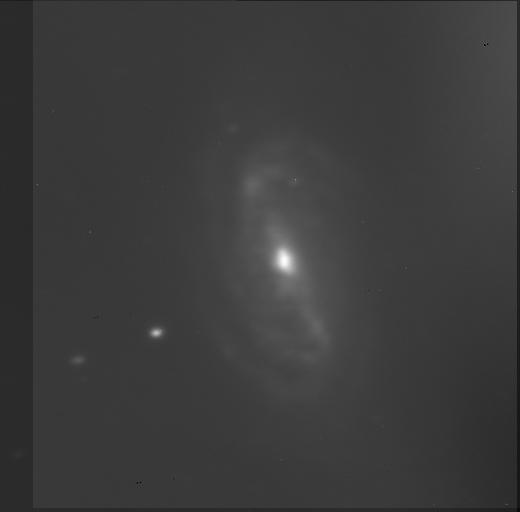
Comments: Noise added by Master Flat division due to the guide camera being moved between our images and flat fields
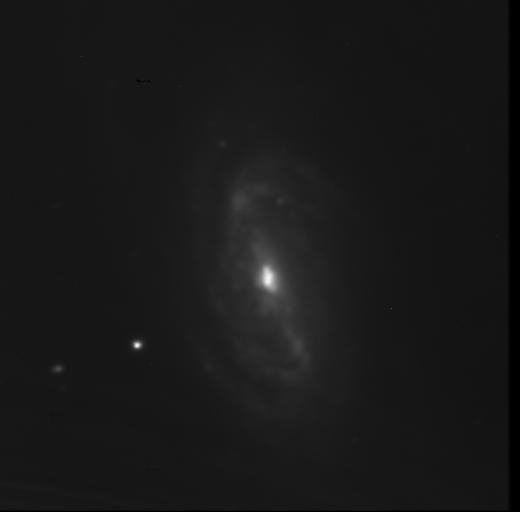
Comments: Unfortunately, we failed to notice the presence of fringes (ripple caused by light reflecting off the back of the CCD chip and interfering with incoming light) in the images, and so were unable to correct for them.
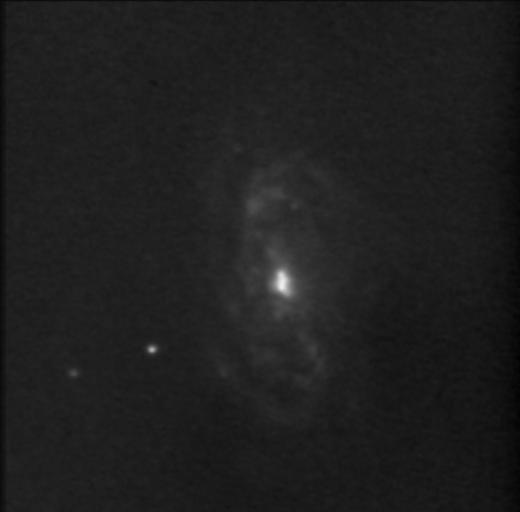 |
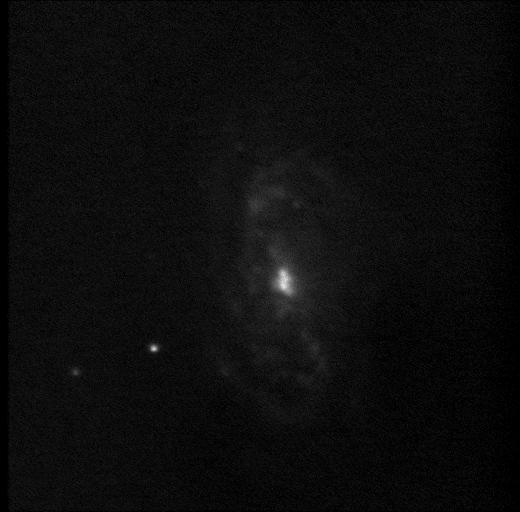 |
| First Image (Median filter) | Second Image (Med Combined ) |
• Raw • Basic Image • Manipulation •
• Back • Index •
_________________________________________
Banner image is a slice of HST image by NASA/ESA